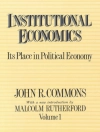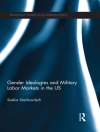How do leading Conservative politicians strive to communicate with and influence the electorate? Why have some been more effective than others in advancing their personal positions and ideological agendas? How do they seek to connect with their audience in different settings, such as the party conference, House of Commons, and through the media?
This book draws analytical inspiration from the Aristotelian modes of persuasion to shine new and insightful light upon the articulation of British conservatism, examining the oratory and rhetoric of twelve key figures from Conservative Party politics. Each chapter is written by an expert in the field and explores how its subject attempted to use oratory to advance their agenda within the party and beyond.
This is the first book to analyse Conservative Party politics in this way, and marks an important new departure in the analysis of British politics.
Cuprins
Introduction: Analysing oratory in Conservative Party politics – Richard Hayton and Andrew S. Crines
1. The oratory of Stanley Baldwin – Andrew Taylor
2. The oratory of Winston Churchill – Kevin Theakston
3. The oratory of Harold Macmillan – Brendan Evans
4. The oratory of Iain Macleod – Mark Garnett
5. The oratory of Enoch Powell – Philip Norton
6. The oratory of Keith Joseph – Mark Garnett
7. The oratory of Margaret Thatcher – Peter Dorey
8. The oratory of Michael Heseltine – Mark Bennister
9. The oratory of John Major – Timothy Heppell and Thomas Mc Meeking
10. The oratory of William Hague – Judi Atkins
11. The oratory of Boris Johnson – Katharine Dommett
12. The oratory of David Cameron – Tim Bale
Conclusion: oratory and rhetoric in Conservative Party politics – Richard Hayton and Andrew S. Crines
Index
Despre autor
Andrew S. Crines is a Research Fellow in Rhetoric and British Politics at the University of Leeds












